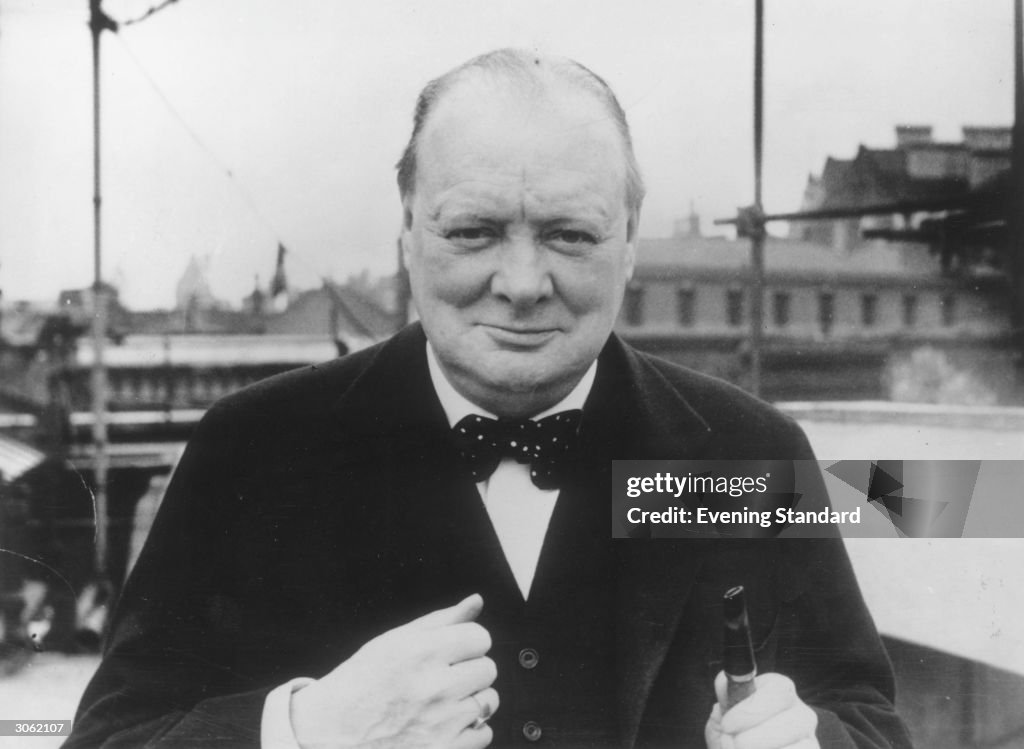The gift of Monet painting lifted Churchill’s mood in postwar period
The generous gift for former PM will be featured in a prestigious exhibit of his London masterpieces
Finding yourself in opposition in the House of Commons can be uncomfortable for those who once led the nation, especially for someone also credited with a vital military victory. So it was for Winston Churchill . But in 1949 he was consoled with the extraordinary gift of a French impressionist masterpiece: Claude Monet’s depiction of the Palace of Westminster, wreathed in heavy mists.
The present, which is now worth millions of dollars and accompanied by an e-mail to Churchill in which he wished the “the fog that shrouds Westminster” which was then run by the Clement Attlee’s Labour party was soon to lift.
The blurry study of the façade of Westminster over the River Thames, completed in 1902, is set to be among the highlights of an important show, Monet and London, which will bring together many of the most famous impressionist photographs from London and the Thames for the very first time after over 120 years. The picture of the former prime minister is one of the two Monets with British ownership included in the exhibit on display at the Courtauld gallery at the Strand this month and has been recently restored to be displayed, including taking off a yellowing layer of varnish, which was then applied onto the canvas.
“Churchill’s love of Monetdates right back to when he was first studying painting himself in the 1920s, after he was tutored by the portraitist John Singer Sargent, who had done a picture of his mother,” explained Katherine Carter, curator at Chartwell the politician’s former residence in Kent. “Sargent had suggested that Churchill start by copying the work of other artists to learn from their methods. I believe he continued to have the best time replicating Monet’s style. Monet and other impressionists. He described it as a “joyride in the paintbox’. “
The London work is now owned by The National Trust, as the custodians for Chartwell it was presented by Churchill in the form of “a very small token of my gratitude for your friendship” by his literary agent Emery Reves, who knew the artist was fond of Monet. The painting was done during the French artist’s final visit in London and is believed as being the same one he described by him in his diary entries written in February, 1900 (he was working on a number of paintings for a long time) in which Monet wrote about “an extraordinary fog, completely yellow; I think I did not too bad an impression of it; it’s always beautiful”.
Reves spent a considerable period of searching for a suitable painting that could be an all-inclusive Christmas and 75th birthday gift for Churchill. In a letter today at the Churchill Archives Centre in Cambridge Reves wrote what he described as “a true story”, detailing his efforts to locate the ideal canvas.
A painting that he had stumbled across in Paris was of the same scene, however the artist later finds it in the London’s Royal Academy of Arts in an exhibit that showcases French landscapes. “In the Academy the picture looks good, although it is much more sketchy and not so well painted as the one I found in France,” Reves writes. “I talked about this painting in conversation with John Rothenstein of the Tate Gallery who was very eulogistic even referring to it as a “masterpiece”. I wanted to confirm that he was a fan of the work and asked him if he would you like to hang it at the Tate Gallery?’ to which he firmly stated that he would be more than content to do it. Invigorated by the idea that even if you don’t enjoy it, you could always donate it to the Tate I made arrangements that the painting be delivered to the Tate Gallery this morning.”
Churchill was not happy to be absent from government after 1945, and he was not a frequent visitor to his House of Commons. Churchill is also believed to leave the day-to-day administration of the Conservative party to other members however, he continued to enjoy the status of a diplomat on the international stage.
However, his passion for painting, as a pastime and a fan, was a constant enjoyment, as it was during his time as a president. “Churchill had written about the pleasure that art gave him as far back as 1921 and 1922 in his articles on Painting as a Pastime for Strand magazine,” stated Carter. “And during the darker days of the first world war he also said he felt that ‘the muse of painting came to my rescue.'”
The view that Monet painted upstream toward Westminster is just one of the numerous variations of the scenes he depicted in The Savoy Hotel on the Strand which was in which his window was looking across Waterloo Bridge on through to Charing Cross and beyond. It is also an exact view of the river similar to one taken from Courtauld gallery’s residence, which is close proximity to Somerset House.
The artist first came to London after a trip to France in the early 30s however it wasn’t until nearly three decades later that he began to tackle the long-held dream of recapturing the fog-like effects in the Thames. The artist painted on a variety of canvases simultaneously and captured the shifting effect of light and colour in the humid, smoky city. “I so love London!” He once gushed to the well-known art dealer Rene Gimpel, but “without fog London isn’t a stunning city. The fog provides it with a stunning size. Massive regular blocks are majestic in the cloak of mystery.”
